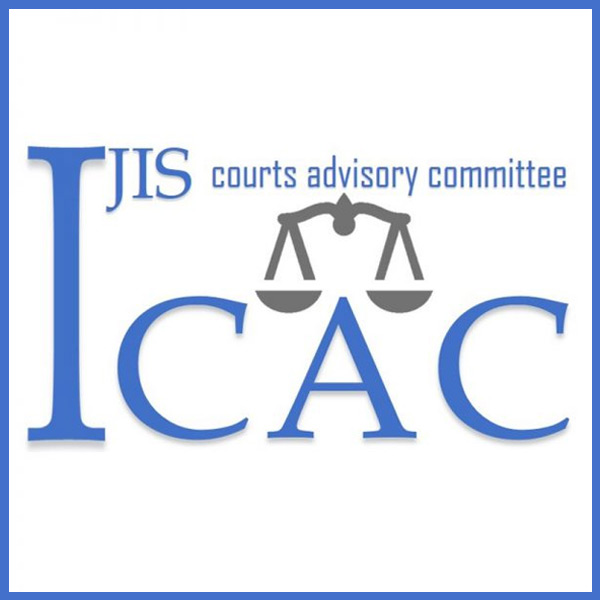A COLUMN DEDICATED TO THE EXCHANGE OF IDEAS ON INFORMATION SHARING IN JUSTICE
Sue Humphreys, IJIS Courts Advisory Committee, Vice Chair
Congratulations! Your team just selected an excellent proposal for your new system. Even more exciting, it’s cloud based, a first for your court. Next step: Negotiate the contract—you have done that before. But the agreements in the court software provider’s proposal are new to you, and they don’t work with your court’s standard IT contract. What is going on here?
Courts and court IT solution providers are transitioning to cloud-based delivery of solutions and software. This approach is a transition from largely buying, installing, and maintaining assets (on site at the court) to signing up for technology-based services. Because what the courts are buying has changed, so too must the agreements. Far too many courts and IT solution providers struggle in making this transition. This struggle often creates some fog and confusion in contract negotiation.

Parties may come to the table expecting to negotiate a contract similar to those they have used in the past—involving the delivery and implementation of a system (an asset). Instead, the parties must embrace a new perspective that involves contracting for ongoing services, along with all the responsibilities, assurances, and benefits that entails.
One key to successfully negotiating any contract is to establish a common understanding of the transaction at hand. You can use the basic model below to help with that. You will also see three examples that indicate the range of possibilities in a cloud-computing world. This model can help to get you and your court’s software provider on the same page and closer to a contract.
A Basic Framework
Let’s look at different approaches to delivering and supporting IT solutions for any organization. A complete and well-managed system—e.g., a court’s case management system (CMS)—requires a blend of assets and services to support court operations effectively.
Assets
Of course, any system requires software, networks, and hardware to run. At a basic level, these assets include:
- Infrastructure: computers, related hardware, and the facilities to house them.
- Network: telecommunication between those computers and end-user devices.
- Software, including
- infrastructure (nonfunctional)—foundational software that is often transparent to the end user (e.g., operating systems, database management systems); and
- court (functional)—software visibly delivering capabilities to the end user (e.g., CMS).
- Data: the information maintained by the system and driving how it functions.
Services
The other major part of the solution is the work that goes into creating, setting up, and running the application—the services. Basically, services include:
- Provisioning/Setup: acquiring and installing all the assets so that the system can begin operations (including data conversion).
- Development/Maintenance/Upgrades: designing, developing, maintaining, and upgrading the IT assets.
- Operations/Monitoring: administering and monitoring the system to ensure that it operates reliably.
- Support: training and troubleshooting to help the folks using the system.
Three Examples Along the Continuum
The basic premise of this model is that it takes a blend of assets and services to deliver a complete IT solution. Given the cloud resources, adaptive software, reliable telecommunications, and innovative solution providers in the market today, you can imagine there are many ways to deliver mission-critical applications to a court. Three examples illustrate the range of possibilities.
Site-Based
The site-based approach is the one you are probably most familiar with. It involves buying, deploying, and running a system on site at a court. While this is not a cloud or hosted solution, this approach is provided for context. Figure 1 shows who is responsible for which aspects of this type of project.
Figure 1—Site-Based Solution

In this example, the solution vendor contracted by the court provides and sets up the software. They make arrangements to acquire and set up the infrastructure: hardware, software, and network. However, component providers—e.g., the court software provider, third-party original equipment manufacturers (OEMs), and other third parties—are responsible for development, maintenance, and upgrades for the goods that they provide. The court takes responsibility for the rest, often managing multiple contractors in the process.
The major agreements in this scenario may include:
- Standard court contract with the solution provider, including
- price schedule for (assets) to be delivered; and
- scope of work for implementation and post-implementation assistance.
- License, warranties, maintenance, and support agreements from the solution provider.
- Standard third-party license, warranties, maintenance, and support agreements.
Under this scenario, the court is directly responsible for ensuring that the application runs reliably and securely. In addition, the court ensures its staff have the all training and support they need. While the court can see the fruits of its capital investment (servers in a court-managed data center), it must also care for and replace those assets as they age.
Cloud-Based Infrastructure as a Service (IaaS)
This cloud-based example is the next logical progression from the site-based model described above. Under this alternative, the infrastructure resources needed for the solution are acquired as a cloud-based service. In this case, the only major asset that the court is acquiring is a license to the solution provider’s software. Figure 2 shows who is responsible for what aspects of this type of solution.
Figure 2—Cloud-Based IaaS Solution

In this example, the court arranges for third parties to provide infrastructure and network services. Those third-party providers take primary responsibility for the continuity, quality, and security of the services they provide. The court software provider installs and sets up their software, taking responsibility for development, maintenance, and upgrades of that product. As in the site-based example discussed above, the court takes primary responsibility for the rest.
The major agreements in this scenario likely include:
- Standard court contract with the solution provider, including
- price schedule for (assets) to be delivered; and
- scope of work for implementation and post-implementation assistance.
- License, warranties, maintenance, and support agreements from the solution provider.
- Standard service agreements from the cloud service providers, including
- price schedule for cloud-based services for a specified duration; and
- service-level agreement.
- Standard third-party license, warranties, maintenance, and support agreements for resources not provided as a cloud service.
Under this IaaS scenario, the courts don’t have to worry about buying, installing, maintaining, upgrading, and periodically replacing the hardware, related infrastructure software, and facilities. The cloud service provider performs those duties with economies of scale and expertise that the court may find hard to match. While the court no longer needs to maintain a physical data center, it must manage a variety of service providers to ensure the application is running effectively.
Managed Software as a Service (SaaS)
Courts and other justice agencies are extending well beyond IaaS to fully managed SaaS. This solution is exemplified in Figure 3. In this scenario, the court calls on the solution provider to run nearly all aspects of the application.
Figure 3—Managed Software as a Service Solution

In this example, the solution provider arranges for third-party infrastructure services and manages almost all other aspects of the operation of the application. The court is simply responsible for the data it maintains as it uses that application.
The major agreements in this scenario might include:
- Standard service contract from the solution provider, including
- price schedule for software services for a specified duration;
- scope of work for implementation and post-implementation services;
- licenses;
- warranties;
- maintenance and upgrade agreements; and
- service-level agreements.
- Standard third-party license, warranties, maintenance, and support agreements for resources not provided as a cloud service.
This scenario is a fundamentally different transaction than that used for a site-based implementation of an IT solution. There is no significant capital investment for the court to maintain. Instead, the court manages a long-term service agreement.
Conclusion
This framework is quite basic. Real life offers many varied and detailed permutations of the simple scenarios discussed above. These definitions and examples will provide a pattern you and your IT solution provider can use to develop clear and commonly held expectations as you negotiate your next cloud-based IT solution.
ABOUT THE AUTHOR
Joseph D.K. Wheeler is senior partner and chief executive officer, MTG Management Consultants, LLC.



